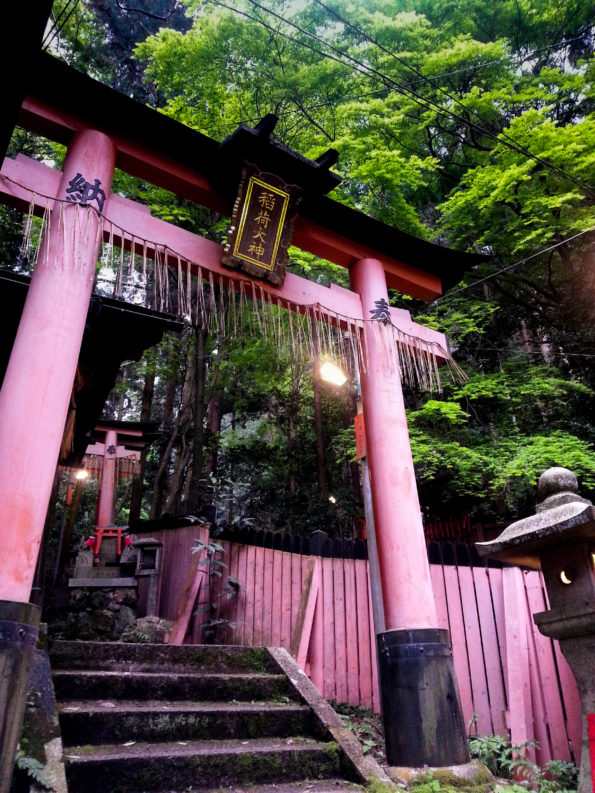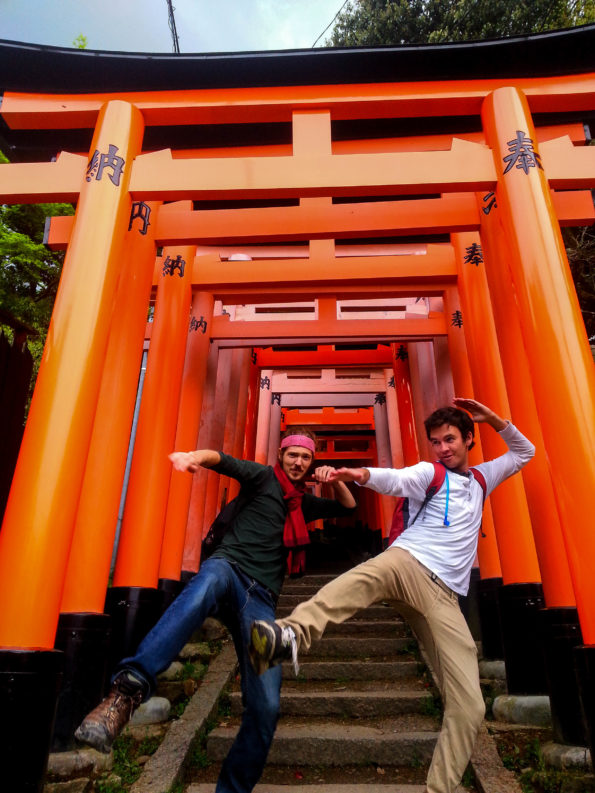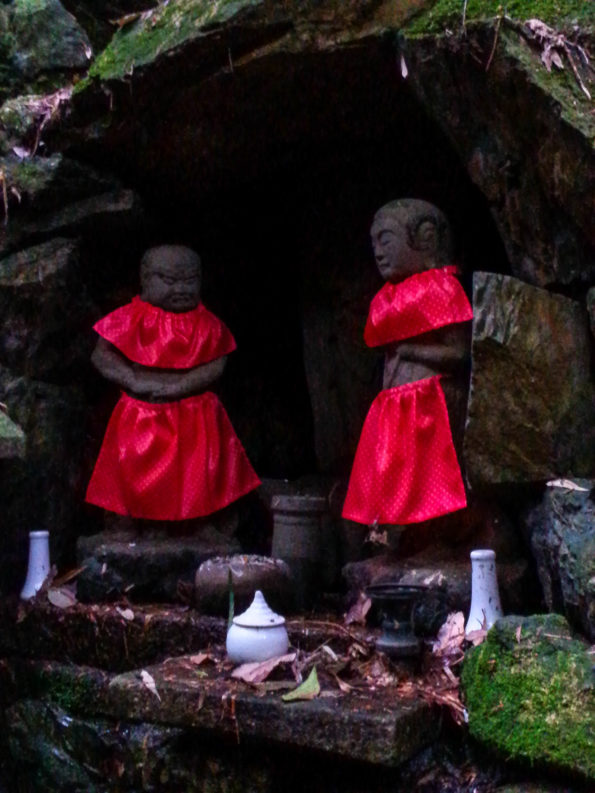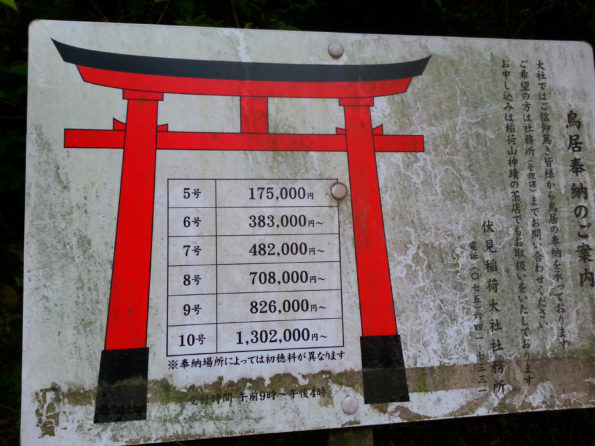The Foxes and Toriis of Fushimi Inari Taisha
Published by CamDarling on
Welcome to Fushimi Inari Taisha Shrine. Also known as the Shrine of 10,000 Torii 鳥居, located on Mt. Inari or “Inariyama” in Japanese. It’s an incredibly popular tourist destination in Kyoto and one of Japan’s most important Shinto Shrines. Bring your walking shoes, it’s a little bit of a climb!
Fushimi Inari Taisha is the main “Inari” Shinto Shrine . An Inari Shrine is one dedicated to the worship of the God Inari, and there are around 32,000 across all of Japan. The God Inari is the Japanese god (神 Kami) of foxes, fertility, rice, tea and sake. Yes, there is a god of Sake! So I recommend worshiping regularly, especially in Fushimi Sake District. Today, God Inari is also worshiped as the god of industry and agriculture in general, they even hold a special event for business prosperity every April called “Sangyo-sai”. Note that Inari worship is not unique to Shinto Shrines, as there are many Buddhist temples also dedicated to Inari. Shinto is a religion unique to the islands of Japan with influences from Hinduism and Buddhism.
Hours, Services & Events
- Hours: 9:00 am to 5:00 pm
- Fee: Donations Accepted
- Services: Daily Shrine Ceremony from 12:00 pm in the Main Building & Mountain Top Ceremony from 1:30 pm.
Special Events and Ceremonies are held throughout the year at Fushimi Inari Taisha Shrine. Please visit the Official Fushimi Inari Taisha Website for a full listing. I seriously recommend checking out the exact day of the event around the time of your trip and adding it to your itinerary.
Quick List of Events
- January – Hosha-sai – Archery Ceremony
- February – Hatsu-uma Taisai Festival – Shrine Anniversary
- April – Inari Matsuri Festival – Biggest Festival of the Year
- July – Motomiya-sai Festival – Inari Worshipers From All over Japan
- November – Hitaki-sai Festival – Fire Festival
Fox & Toriis of Inari Shrines
The story of Mt. Inari Shrine began with an imperial order, or a legend from a divine miracle.
The legend: Irogu no Hatonokimi threw a rice cake into the sky and it turned into a swan and flew away to eventually land on the top of Mt. Inari. This was seen as a great omen and rice started growing in bountiful harvests. The mountain was then named “Inariyama” after the god of rice fertility. “yama” means mountain in Japanese.
The ancient texts: Irogu no Hatonokimi was ordered by Empress Genmei to enshrine three deities in three mountains, god Inari was then enshrined in Inariyama back in 711 AD. Like the legend, farmers reported great harvests of rice that year.
Whatever story you choose, for over 1300 years, Fushimi Inari Taisha Shrine has been associated with the God Inari and rice fertility, for which rice planting ceremonies are held each year.
The Shrine became the highest rank of Shinto Shrines in 942 AD, and the Romon Main Gate was added in 1589 thanks to the donations of Regent Toyotomi Hideyoshi, whom we covered in detail in our Osaka-Castle Article. Hideyoshi prayed to Inari for his mother’s health and donated a fortune in rice to the shrine.
Hats, Bibs & Clothing
One of my favorite parts of exploring Fushimi Inari Taisha Shrine was seeing all the little statues adorned with hand knit hats, bibs and clothing. Worshipers dress up the statues as an offering to the God Inari for good health and fertility. But don’t worry, apparently the hats are removed in the summer so the statues don’t get too hot.
Fox (狐) Guardian of Inari
The Japanese word for fox is “Kitsune” 狐. They are the guardians and messengers for the God Inari. You can find them standing beside Torii gates or beside other Shinto figures. The foxes are said to shape-shift into human form to protect, befriend or trick humans.
Many of the folktale stories that involve Foxes or Kitsune end badly for the humans involved. Like the coyote or other trickster legends. But I found one that I really liked:
After waiting for many seasons, Ono finally found the woman of his dreams. He married her and was gifted his first child, but Ono also had a dog that grew increasingly aggressive towards his wife until one day it attacked. Scared, his wife turned into a fox and leaped over the fence. Ono seeing his wife transform yelled after her: “You may be a fox, but you are the mother of my son and I love you, please come back when you please”. Every night, the fox returns in the shape of a woman and leaves again in the morning as a fox. So she is called “Ki-tsune” meaning “always comes” in classical Japanese.
In Japanese, the fox says “kon kon“, which is interesting.
Fans of Naruto or Pokemon might know this is where “Kyu-bi Kitsune” or “Nine-tails Fox” legend originates. The wisest, oldest and most powerful Kitsune have nine tails.
What do the Toriis (居) mean?
Why are there 10,000 Torii gates at Fushimi Inari Taisha Shrine?
Torii Gates mark the entrances of most Shinto Shrines and some Buddhist Temples in Japan, they are a symbol of entering a sacred space. The Inari Shrines have so many because each one is a donation to the shrine by individuals and businesses in gratitude for their success and accomplishments. Recall, Inari is the god of fertility and industry in general. Each of the 10,000+ Toriis are marked with the names of those making the offering. See the pricing chart below, the largest Toriis cost roughly $13,000 USD to erect as a donation. You can buy smaller ones to offer at the Shrine shop.
Origami Paper Cranes
When you enter Fushimi Inari Taisha’s main village area at the bottom, you’ll find thousands of colorful paper cranes hanging from special shelves on the side walls. Beautiful! But what do they mean?
The crane (鶴) “tsuru” represents the red crowned crane that is said to live for 1000 years. It is the most popular origami (art of folding paper) and a symbol of prayer for longevity and health. Souls after death are carried to paradise upon the crane’s wings. The famous legend states that anyone who folds 1000 paper cranes (千羽鶴) will be granted a wish. You may have heard the story of Sadako Sasaki after WW2. If not, we will cover it when we look at the History of Hiroshima, the sad story has it’s roots in this legend.
Hiking up Mt. Inari
Mt. Inari is a Shrine, but it’s also a 2 hour hike to the top (One way). It’s an enormous shrine complex with a main village and 32,000+ sub-shrines spread-out around the mountainside. The mountain is 233 meters above sea-level and both routes the the top are 4 kilometers long. Bring good shoes and water unless you plan to only take a few selfies at the bottom like most tourists.
I really recommend walking up to the top and checking out the small shrines set along the path. The bottom is so busy with people trying to take photos, you will find the top mostly empty and a lot more peaceful. It’s really worth it!
Directions to Fushimi Inari Taisha Shrine
Train From Kyoto Station
- Take the JR Nara Line 2 Stops from Kyoto Station
- 5 Minutes and 140 Yen ($1.40 USD)
- Get off at Inari Station
- Walk east the short distance to the Shrine
We hope you enjoy your visit to this incredible Shrine and take a moment to yourself to pray for good health and economic prosperity! Also remember to help out the Shrine with a donation! And a big thank you to Ashanti, Even and Ellie for joining me on this trip!

























0 Comments